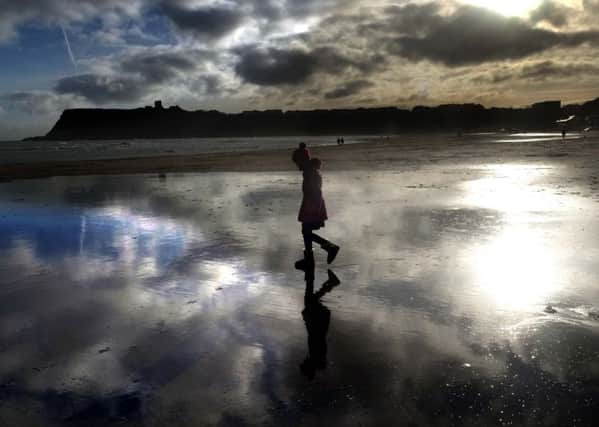Winter sun sets on historic seaside castle ruin


Scarborough Castle can be glimpsed in the distance in silhouette. The castle has a long history. It is known that forts have been built on the headland at Scarborough since at least 500BC but that a Roman tower occupied the present site in about AD4.
Scarborough Castle stands on a huge promontory of rock that rises above the North Sea. The ruin dates from the 12th century and is dominated by the great tower, the centrepiece of a royal castle. It became one of the greatest royal fortresses in England and figured prominently in national events during the Middle Ages.
Advertisement
Hide AdAdvertisement
Hide AdThe castle was founded in about 1130 by William le Gros, Count of Aumale. He was later made Earl of York by King Stephen in 1138 and was considered the unrivalled political master of the region.
However, when Henry II (1133-1189) acceded to the throne in 1154, he demanded the return of all castles, Scarborough among them. It therefore passed into the hands of the Crown.
However, this was a significant development, because Henry, and subsequent kings, spent a great deal of money expanding the castle and the town below it. In the mid-12th century, a sum of £650 was spent on the castle (a vast sum at the time), most of which went on the tower, which was put up in the 1160s.
King John (1166-1216) spent £2,291 on Scarborough Castle, more than any other in the kingdom.
Advertisement
Hide AdAdvertisement
Hide AdThus, being a well provisioned, well fortified castle, it had strategic importance, not just in terms of controlling routes to and from the North but also in terms of holding prisoners. Indeed, during the 17th century it was used as a prison.
However, it has been a ruin since it was laid siege to by Cromwell’s troops during the English Civil War – they ruined it using the biggest cannon ever assembled, firing 50lb balls.
TECHNICAL DETAILS: Fujifilm XE1 camera, 18-55mm lens with an exposure of 1/500th sec @ f5.6, ISO 200.
Picture: Simon Hulme
Words: Neil Hudson